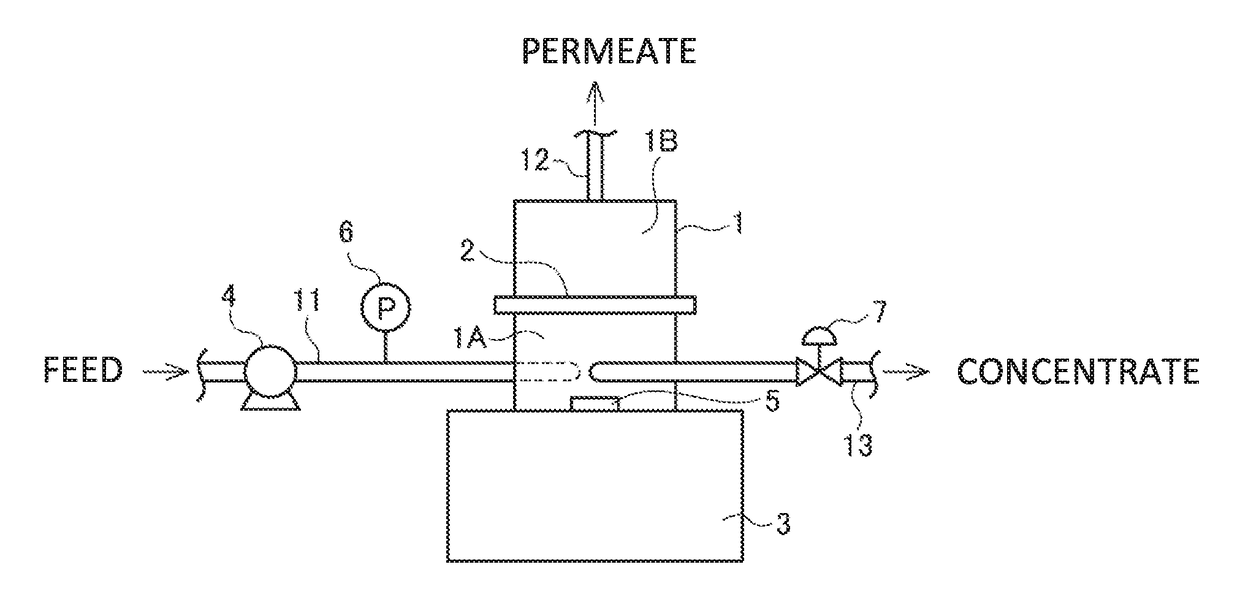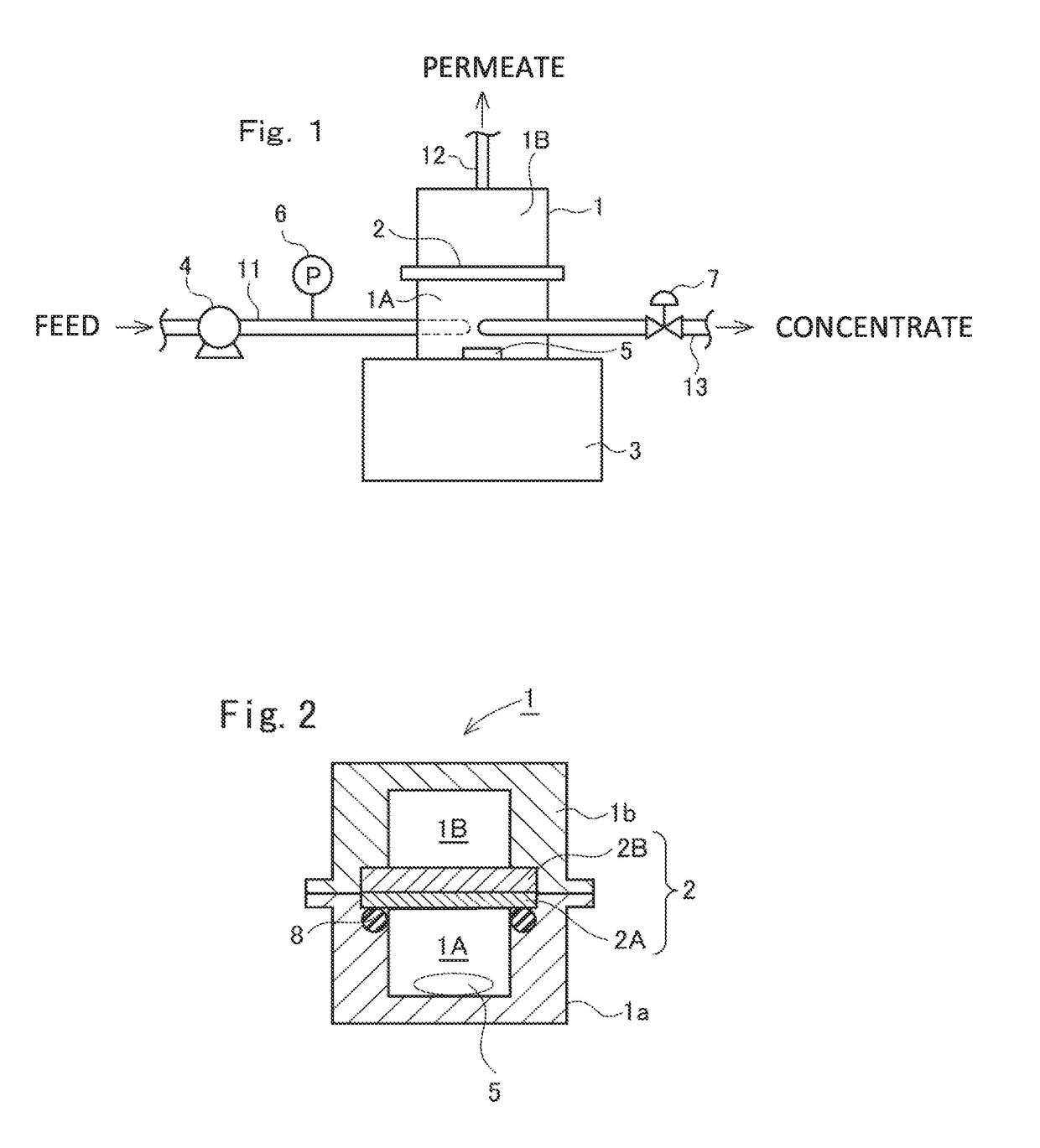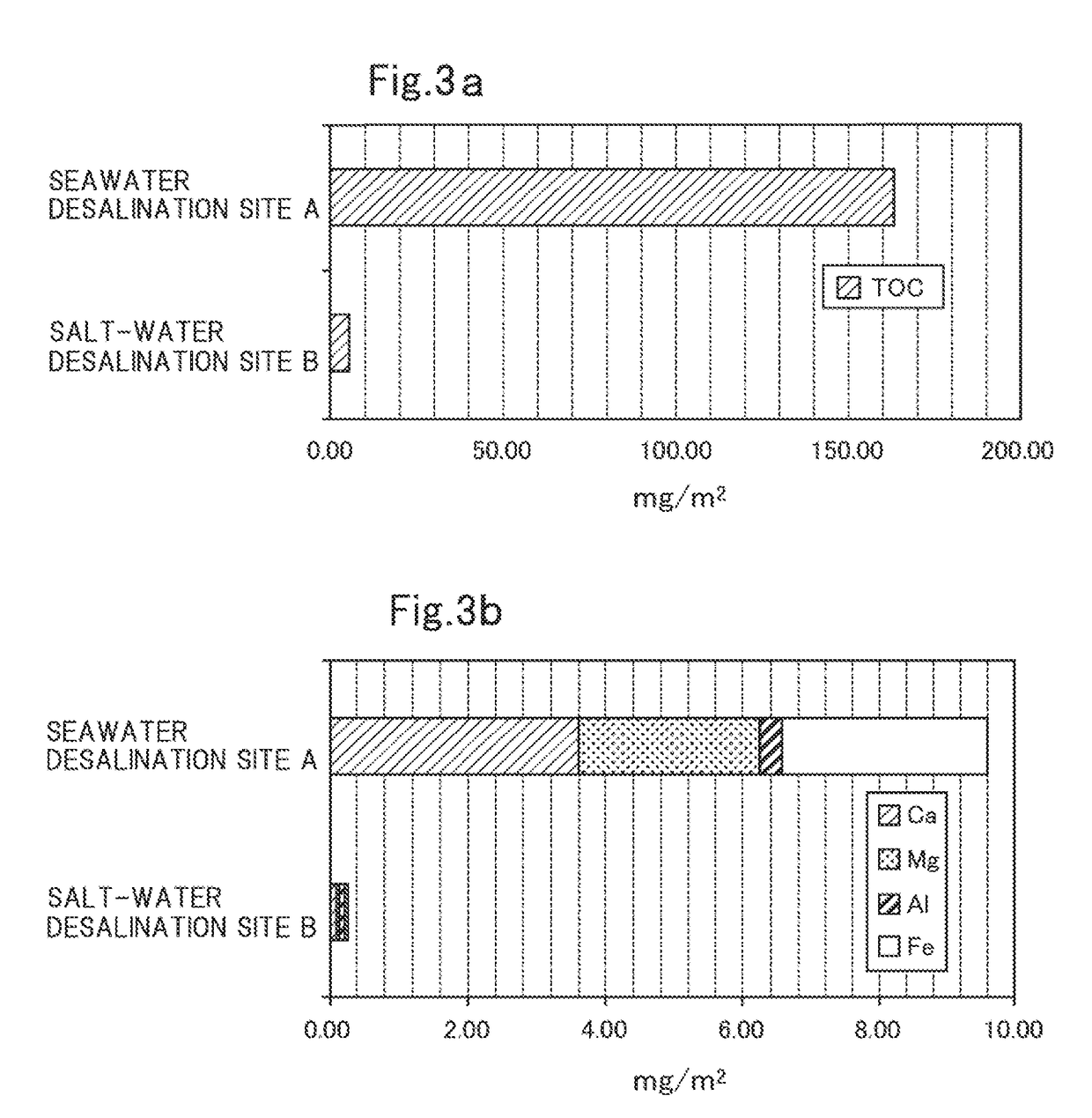Agent, liquid, and method for cleaning reverse osmosis membrane
a reverse osmosis membrane and liquid cleaning technology, applied in reverse osmosis, detergent compounding agents, inorganic non-surface active detergent compositions, etc., can solve the problems of aromatic polyamide ro membrane not being used in a treatment in which the ro membrane is used, the ro membrane included in the ro membrane system is fouled with various foulants, etc., to achieve the effect of effectively cleaning the ro membrane and efficiently removing foulants
- Summary
- Abstract
- Description
- Claims
- Application Information
AI Technical Summary
Benefits of technology
Problems solved by technology
Method used
Image
Examples
examples
[0090]The present invention is described below further specifically with reference to Examples and Comparative examples.
[0091]In Examples and Comparative examples below, the RO-membrane cleaning effect was determined using the flat-membrane testing apparatus illustrated in FIGS. 1 and 2.
[0092]In the flat-membrane testing apparatus, RO-membrane feed is fed to a raw-water chamber 1A included in a closed container 1 with a high-pressure pump 4 through a pipe 11. The raw-water chamber 1A is located below a flat-membrane cell 2 including an RO membrane. As illustrated in FIG. 2, the closed container 1 is constituted by a lower casing 1a and an upper casing 1b, which are located on the raw-water-chamber-1A side and the permeate-chamber-1B side, respectively. The flat-membrane cell 2 is fixed in position by being interposed between the lower casing 1a and the upper casing 1b with an O-ring 8. The flat-membrane cell 2 is constituted by an RO membrane 2A and a porous supporting plate 2B that...
example 1
[0097]Aqueous sodium hydroxide solution containing 0.1-weight % sodium gluconate and having a pH of 12
example 2
[0098]Aqueous sodium hydroxide solution containing 0.5-weight % sodium gluconate and having a pH of 12
PUM
| Property | Measurement | Unit |
|---|---|---|
| pH | aaaaa | aaaaa |
| pH | aaaaa | aaaaa |
| concentration | aaaaa | aaaaa |
Abstract
Description
Claims
Application Information
 Login to view more
Login to view more - R&D Engineer
- R&D Manager
- IP Professional
- Industry Leading Data Capabilities
- Powerful AI technology
- Patent DNA Extraction
Browse by: Latest US Patents, China's latest patents, Technical Efficacy Thesaurus, Application Domain, Technology Topic.
© 2024 PatSnap. All rights reserved.Legal|Privacy policy|Modern Slavery Act Transparency Statement|Sitemap



